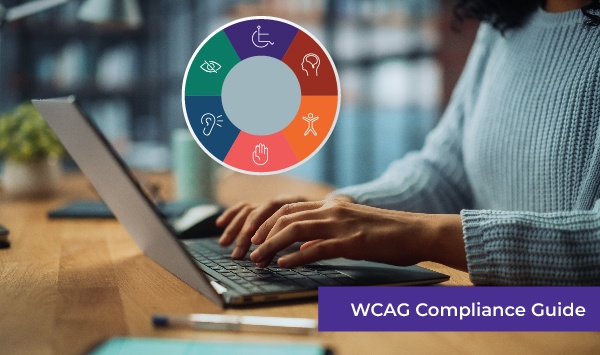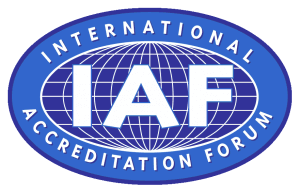In today’s digital first world, creating accessible websites isn’t just a technical requirement – it’s a moral and legal obligation. Accessibility ensures that everyone, including people with disabilities, can use the web without barriers. The Web Content Accessibility Guidelines (WCAG) were developed to standardize how to make web content more inclusive. Whether you’re a developer, designer, or business owner, understanding WCAG is key to building equitable digital experiences.
What are the WCAG Guidelines?
WCAG stands for Web Content Accessibility Guidelines. These are a set of recommendations published by the World Wide Web Consortium (W3C) under the Web Accessibility Initiative (WAI). The goal of WCAG is to provide a framework that makes web content more accessible to people with a variety of disabilities, including visual, auditory, motor, speech, and cognitive impairments.
These guidelines are technology-neutral, meaning they can be applied across different platforms, tools, and devices – from websites to mobile apps and beyond.
What are all the WCAG Levels?
WCAG includes three levels of conformance:
- Level A (Minimum) – The most basic web accessibility features.
- Level AA (Intermediate) – Addresses the biggest and most common barriers for disabled users.
- Level AAA (Advanced) – The highest level of accessibility, recommended for highly specialized content but often impractical to meet in full.
Most legal standards and organizational policies aim for at least WCAG 2.1 Level AA compliance.
Guidelines and Success Criteria
Each version of WCAG (2.0, 2.1, and the recent 2.2) is structured around principles, which are further broken down into guidelines. Each guideline includes success criteria – specific requirements that determine if the content meets accessibility goals.
- WCAG 2.0 introduced 61 success criteria.
- WCAG 2.1 added 17 more to address mobile and cognitive accessibility.
- WCAG 2.2 added additional criteria for user input and authentication improvements.
Each success criterion is tagged with a conformance level (A, AA, or AAA).
The Four WCAG Principles (POUR)
All WCAG guidelines are based on four key principles, collectively known by the acronym POUR:
Perceivable
Information must be presented in ways users can perceive – e.g., providing alt text for images or captions for videos.
Operable
The interface must be usable with different input methods, like keyboard navigation or screen readers.
Understandable
Content and navigation should be predictable and easy to comprehend, using clear instructions and consistent layouts.
Robust
Content must function reliably with current and future assistive technologies, ensuring long-term compatibility.
WCAG Success Criteria Explained
Each criterion under the POUR principles includes
- A measurable requirement: For example, “Text must have a contrast ratio of at least 4.5:1.”
- Testing methodology: You can verify if a criterion is met via automated tools, manual checks, or user testing.
- Impact scope: Criteria often relate to users with specific types of disabilities, such as blindness or dyslexia.
Examples:
- 1.1.1 Non-text Content (Level A): Provide text alternatives for images.
- 2.4.7 Focus Visible (Level AA): Keyboard focus must be visible on all interactive elements.
- 3.1.3 Unusual Words (Level AAA): Define idioms or jargon for better clarity.
What Level of WCAG Should You Conform To?
In practice:
- Level A is the legal minimum in some jurisdictions but not sufficient for modern accessibility.
- Level AA is widely accepted as the standard that most organizations should meet.
- Level AAA is rarely fully implemented, but you can aim to meet individual AAA criteria that are feasible for your site.
Aim for Level AA compliance for a balance between accessibility and practical implementation. You can take our free consultation to know whether your website is compliant or not.
How Can You Test If Your Website Conforms to WCAG?
Testing involves both automated and manual approaches:
Automated Tools:
- WAVE by WebAIM
- Accessibility Checker Tool
- axe by Deque
- Google Lighthouse
- Siteimprove Accessibility Checker
These tools identify common issues like missing alt text, color contrast errors, and heading structure problems.
Manual Testing:
- Keyboard Navigation Test: Ensure all functionality can be accessed without a mouse.
- Screen Reader Compatibility: Test with tools like NVDA or VoiceOver.
- User Testing: Involve people with disabilities in usability testing.
Audit Reports:
Document all findings, prioritize issues by conformance level, and track remediation efforts.
Legal and Ethical Considerations
Accessibility is not only about compliance – it’s a civil right. Many countries enforce web accessibility under different laws:
- ADA (Americans with Disabilities Act) – USA
- Section 508 – Applies to U.S. federal agencies
- EN 301 549 – European Union
- Accessibility for Ontarians with Disabilities Act (AODA) – Canada
Non-compliance can lead to legal action, financial penalties, and reputational damage. But more importantly, excluding users from digital services can reinforce inequality.
Conclusion
Adhering to WCAG is an investment in digital inclusivity. By embracing these guidelines, you’re not just checking a compliance box – you’re building a web that works for everyone. Start with audits, involve accessibility early in the development lifecycle, and view accessibility as an ongoing responsibility, not a one-time task.
An accessible website is better for everyone: more usable, more discoverable, and more equitable. Contact us today and make your website accessible for all.





